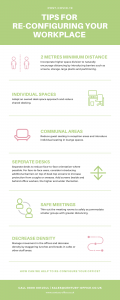Smart home office storage ideas
The best way to store your items on open shelves is by using hooks. You can find them at any hardware store, but if you don’t have one then just use nails or staple gun blades as long as they are flathead ones so that there won’t be too much space between each piece of furniture and its neighboring stand!
You can’t go wrong with a classic wooden rack or baskets to store your things. They’ll not only look great on top of an office desk, but it’s also easy enough that you could make one yourself! If function is more important than form for what resides in this space then try using something like notice boards which allow ample room inside them so important papers don’t get lost when they’re needed at their most secure locations.
Boxes and letter files are useful additions on your desktop to store items you use frequently. But to stop them looking too business-like, cover them with your favourite wrapping paper, wallpaper or fabric to create a cohesive theme. A storage ottoman or trunk is the perfect place to store your paperwork, but invest in hanging files or separate folders to keep everything separate.
There’s never enough space in our homes for everything we want and need. That is why it pays to invest some time into finding ways that will give you more storage options, like using a drawer organiser! These handy gadgets ensure all those pesky papers stay put while also keeping your workspace neat at any given moment.
Squeeze desktop storage into an alcove
Make use of an empty alcove if you’re needing to set up desk in a bedroom or living area. A slimline ladder-style desk won’t protrude into a room too much and makes a great landing spot for a laptop or tablet.
This bookshelf has a secret drawer for all your little secrets. It’s perfect if you’re looking to create an inviting, organised space that also doesn’t look too cluttered!
Build a wall of storage
Take office storage floor to ceiling with a flexible shelving system that can be tailored to suit your space. Position it adjacent to your desk, so you can grab paperwork and essentials as and when you need it.
Start your set-up with uprights and support brackets to create a framework, then add a combination of shelves, racks, panels or drawers as required.
Keep clutter out of sight
If not kept super-tidy, open shelves can easily look messy, especially if you’re working out of a living room or bedroom.
Corral small-scale clutter away into pretty baskets or decorative storage boxes and stack neatly on shelves. Choose a colour theme that ties in with your decor for a co-ordinated look.

